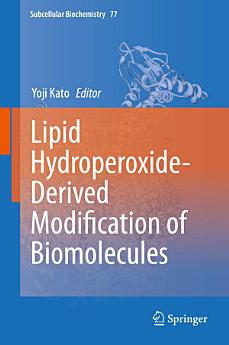Lipid Hydroperoxide-Derived Modification of Biomolecules
Yoji Kato
Dec 2013 · Subcellular Biochemistry Book 77 · Springer Science & Business Media
Ebook
202
Pages
reportRatings and reviews aren’t verified Learn More
About this ebook
Lipid peroxidation is an important cellular process which can lead to detrimental effects if it is not regulated efficiently. Lipid hydroperoxide is formed in an initial step of lipid peroxidation. Lipid hydroperoxide is also known as a potential source of singlet oxygen. Harmful aldehydes are formed when the lipid hydroperoxide is degraded. The formed aldehyde has high reactivity against thiol or amine moieties. Therefore, it could act as a signaling molecule, which might induce the changing of gears inside a cell. Recent studies have shown that lipid hydroperoxide or a slightly modified product of the lipid hydroperoxide reacts with biomolecules such as proteins and aminophospholipids, which leads to formation of amide-type adducts. Amide-type adducts could be one of markers for oxidative stress and could also be an important player in some diseases. In this book, the chemistry and biochemistry of lipid hydroperoxide along with their conjugates with biomolecules are described.
Rate this ebook
Tell us what you think.
Reading information
Smartphones and tablets
Install the Google Play Books app for Android and iPad/iPhone. It syncs automatically with your account and allows you to read online or offline wherever you are.
Laptops and computers
You can listen to audiobooks purchased on Google Play using your computer's web browser.
eReaders and other devices
To read on e-ink devices like Kobo eReaders, you'll need to download a file and transfer it to your device. Follow the detailed Help Center instructions to transfer the files to supported eReaders.







